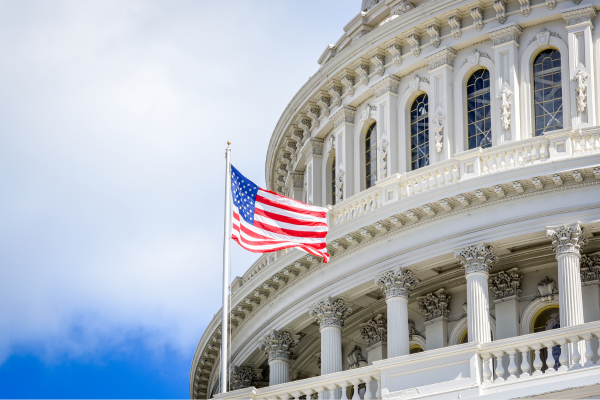
New Oversight in Overdrafts: Balancing Change with Transparency and Consumer Focus
Categories:
The financial regulatory landscape has undergone significant changes in recent months, creating new considerations for community banks and credit unions as they assess their overdraft strategies. From leadership transitions at key agencies to the shifting fate of the Consumer Financial Protection Bureau’s (CFPB) overdraft rule, executives must stay informed to ensure compliance and maintain consumer-friendly programs.
Here’s what you need to know about the latest regulatory developments and what they mean for your overdraft program.
The CFPB’s Overdraft Rule: Where Things Stand Now
In December 2024, the CFPB finalized a rule imposing strict caps on overdraft fees for financial institutions. At the time, many industry experts anticipated significant shifts in overdraft practices. However, since the start of 2025, the rule’s future has become uncertain.
With the transition to the new administration, the rule has come under scrutiny. On February 13, 2025, House Financial Services Committee Chairman French Hill and Senate Banking Committee Chairman Tim Scott introduced a Congressional Review Act (CRA) resolution to overturn the CFPB’s overdraft rule, citing concerns over government price controls and restricted consumer access to overdraft services. The resolution has garnered strong support from financial industry groups, including the American Bankers Association, the Independent Community Bankers of America, and America’s Credit Unions, which argue that the rule oversteps the CFPB’s authority and negatively impacts consumers who rely on overdraft services.
For community banks and credit unions, this regulatory uncertainty underscores the need for a proactive approach. While the rule’s future remains unclear, financial institutions must continue to evaluate their overdraft practices to ensure they align with best practices and regulatory expectations.
Key Regulatory Leadership Changes
With the new administration in place, leadership shifts at federal financial agencies are likely to influence policy direction in the months ahead. Here’s a look at the latest appointments:
- CFPB – Acting Director Scott Bessent took over in January 2025. Bessent brings a background in investment management, having led Key Square Capital Management and served as Chief Investment Officer at Soros Fund Management.
- FDIC – Travis Hill, who previously served as FDIC Vice Chairman, assumed the role of Chair in January 2025. His experience in banking policy and regulation positions him to shape the FDIC’s approach to financial oversight.
- NCUA – Kyle Hauptman was appointed Chair of the National Credit Union Administration (NCUA) in January 2025. His past roles include advising on economic policy for the Senate Banking Committee.
- Federal Reserve Board – Chair Jerome Powell continues to lead the Federal Reserve. While his position remains unchanged, the new administration’s policy priorities may affect monetary and regulatory oversight.
- OCC – Acting Comptroller Rodney E. Hood was appointed on February 10, 2025. Hood has a long history in financial regulation, including leadership roles at the NCUA and in the private sector.
These leadership changes will shape the regulatory approach to overdraft practices and broader financial policies, which may have significant implications for the industry. Having an expert on your side can help financial institutions navigate these changes with confidence, ensuring they remain compliant while maintaining a consumer-friendly approach.
The Continued Focus on Transparency
One consistent theme across regulatory discussions is the emphasis on transparency. Regulators continue to scrutinize fee structures, reinforcing the need for financial institutions to adopt clear, consumer-friendly overdraft strategies.
Regardless of the outcome of the CFPB’s overdraft rule, financial institutions should:
- Ensure their overdraft programs are transparent, with clear disclosures that help account holders understand their options.
- Provide proactive education to consumers on how overdraft services work, helping them make informed financial decisions.
- Regularly review their fee structures and policies to align with industry best practices and evolving regulatory expectations.
With so many regulatory changes in motion, staying informed and adapting to shifts in oversight is essential. Financial institutions should take this opportunity to evaluate their overdraft programs and ensure they align with both compliance requirements and consumer expectations. A thoughtful, transparent approach will not only help maintain trust but also support long-term financial stability for both institutions and their account holders.
Want to stay ahead? Check out our on-demand webinar, Overdraft Outlook 2025, for expert insights on how financial institutions can navigate today’s evolving overdraft landscape. Watch the Full Webinar Here.
At ADVANTAGE, we help community banks and credit unions navigate regulatory complexities while maintaining overdraft programs that balance compliance, revenue sustainability, and consumer value. Our team offers expert guidance on structuring responsible overdraft services that align with current expectations while preparing for future shifts in regulation. Contact us to request a complimentary program review.
To subscribe to our news and updates, visit advantage-fi.com/newsletter.





